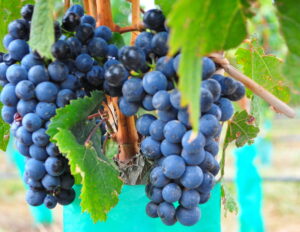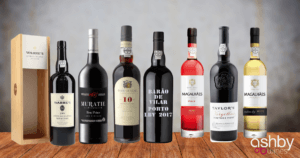Those who enjoy a nice glass of rosé know that this category of wine comes in a broad spectrum of types, quality levels, and, most noticeably, colour intensities.
Rosé wines can come from a multitude of different black grape varieties and range from dry and tart to fruity, off-dry versions. Some even sparkle!
Not only are there several different styles, but they also come from all over the world – either from solely black grape varieties or a blend of those with white grape varieties.
There are a few different ways in which to produce rosé:
Direct pressing involves pressing black grapes so the juice is extracted and taken off the skins quickly. Leaving minimal interaction with the skins and their pigmented tannins, the juice then is fermented like a white wine. This method produces delicate wines that are pale in colour and lighter in body.
Short maceration is where the fruit is crushed and then spends a short period of maceration time on its skins before being pressed. Depending on the duration of time, this method results in a higher extraction of both flavour and colour.
Blending is where winemakers simply blend red wine with white wine, an example being the “blush” wines found in New World regions.
While winemakers have options when it comes to producing rosé, it comes down to what they are looking to achieve. From the vineyard site to the grape varieties and picking time to production method, each of these decisions affects the style of the final product.
Provence is the leading region for the production of French rosé. These pale, medium-bodied styles can be made from Grenache, Syrah, Carignan, Cinsault, and Mourvèdre and typically express delicate red fruit and herbal flavours.
Spainish rosé wines come from many regions such as Rioja, Ribera del Duero, Txakoli, even unexpected areas like Priorat. Most often made from Garnacha, these rosés can vary from pale and light to deeper-coloured with more intensity on the palate.
Portuguese rosé is often simple, fruity, and off-dry table wine. These days, rosé is also made fresh and fruity in Vinho Verde and fortified as a port wine in the Douro Valley. For example, the Magalhães Pink Port – when chilled it offers a lovely alternative for people looking for a younger, fresher style of port.
Rosé is also no stranger to the rest of the world where it can be found in just about every wine-producing area.
Sparkling rosé wines can be produced through short maceration or blending with white grape varieties. Blending red wine with white wine to make rose is not permitted in the EU, yet rosé Champagne is the only exception to the rule where Pinot Noir and Pinot Meunier can be blended with Chardonnay.
Our favourites include, Paul de Coste Sparkling Brut Rosé from Burgundy (£11.99) & Vallate, Prosecco Rosé DOC Millesimato Brut – if you want to combine a love of prosecco and rose wine (£13.99)! As recently as 2020, Prosecco Rosé was introduced to the market. It is made by blending Glera and red wine made with Pinot Noir. A truly exciting new tipple to try!
Food pairings

One of the most underrated food and wine pairings is that of rosé. With its diverse offering, rosés can pair with a wide array of cuisines and flavour profiles. The pale and delicate versions make delicious pairings with summer salads, light pastas, and seafood.
Deeper coloured and full-bodied styles can be partnered with more substantial dishes like roasted vegetables, chicken, and meatier types of fish. These also make for excellent pairings with umami flavour profiles where the rosé’s acidity and flavour intensity can match up to that of the food.
This article has some amazing recipes for trying with your rose wine or why not try a Paella?
Whatever you decide, we hope you have a wonderful international rosé day – this saturday, the second saturday in June, the 11th June 2022!
You can shop our range of Rose Winés here! Cheers!









